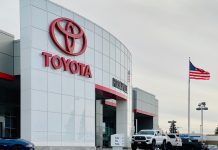A Year of “Playing Catch-Up”
2017 is a year of ups and downs in regards to the auto industry. The previous year saw increases in sales, but 2017 has not seemed to bring the same increase to automobile manufacturers. Between January and July, there were 8.4 million units sold, 193,000 fewer than the previous year around the same time. Since then, car makers have played catch up to 2016’s sales trends, but industry insiders were still positive that the year would still shape up to be the “fifth best in U.S. history.” The initial magic number for the year was and continues to be 17.2 million units sold, but there have been some trends that create an end-of-year picture that is anything but clear. The industry is behind, but there is still hope that everything will keep pace with forecasts.
Mother Nature Alters Predictions
The consistent winners for this year have been Toyota and Subaru with Nissan and Honda experiencing either small gains or minimized losses. These manufacturers have stayed on top with their attention to consumers who prefer sports-utility vehicles and crossovers. The hope was that this trend toward larger vehicles would increase the sales numbers toward the end of the year, and the significant gains of the Toyota RAV4 and Ford F150 went right along with predictions for the year. However, Mother Nature has played a part in rewriting the story for the latter half of 2017. August experienced a two percent decline in auto sales compared to 2016 potentially as a result of Hurricane Harvey. Current estimates have total damaged vehicles at 500,000, and while this did create a situation where dealers in one of the largest auto markets in the country missed out on sales, industry leaders are now incorporating the impact of this storm on the last quarter of 2017. Last year, Florida dealerships generated $70 billion in automotive retail sales, representing another huge market for vehicles. As a result of Irma, Florida residents also have to replace their vehicles. Before the hurricane, some insurance companies halted the process of insuring car purchases, which slowed down potential auto sales. Irma and Harvey’s impact on the auto industry is likely to create a sales surge that could push units sold to over 17 million.
A Push For New Vehicles
According to Business Insider, consumers are facing a tough car market. Older used vehicles are holding their value, there is a high-volume of new vehicles in stock, and there is a limited amount of older used vehicles available for purchase. In this last part of 2017, consumers will face a market with more new cars than used. Texans — and Floridians — who lost their vehicles in the recent storms will more than likely have to purchase new cars, which in turn may boost sales numbers. Along with the unexpected result of Mother Nature, In The Detroit News Jessica Caldwell of Edmunds stated that sales would pick up in the latter half of 2017 since manufacturers have a greater need to move higher numbers of inventory than last year. Currently, units sold are around 16.14 million, still a decline from last year’s units at this same time. However, some are predicting a boost from sales as a result of Texans and Floridians purchasing new vehicles and the resulting push to move new cars can lift units sold to 17.2 million; while sources like Wards Auto have decreased their sales outlook to 16.9 million units. In late August, the Prosper Auto Sales Outlook for the next 90 days was up one percent from last year, with Ford, Chevrolet, Honda being top brands consumers were planning to buy from in the next six months. With so many varying forecasts and opinions, the story of the final quarter of 2017 will depend upon post-hurricane purchases and consumer receptiveness to buying new over used.








